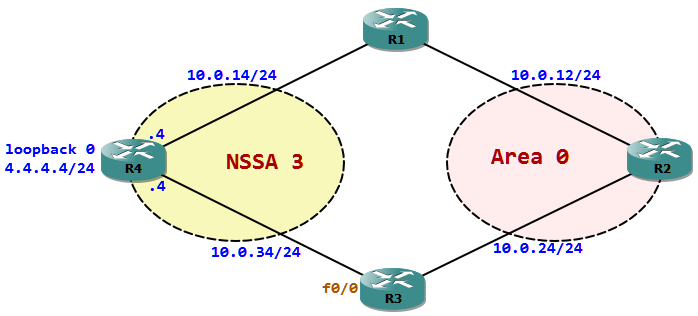An external route could be injected into OSPF domain either as a Type-5 or Type-7. The Type-7 route will be injected by an ASBR from a NSSA area. The Type-5 route will be injected by an ASBR from any normal area.
A Type-7 LSA will be translated to Type-5 by an NSSA ABR and flooded it to the whole OSPF domain. If there are multiple NSSA ABRs, the one with higher RID will do the translation. The forwarding address and the metric-type will remain the same as the Type-7 route. If the forwarding address is non-zero, then metric / cost to the forwarding address is accounted or else the metric / cost is to reach the advertising router (ASBR).
If there are multiple external paths to an identical destination, the NSSA ABR will use the following rules for path selection.
1. E1 and N1 routes are preferred over E2 or N2
2. If both are Type-1 or Type-2 routes, the route with the lower metric / cost will be installed in the RIB
3. If both are Type-1 or Type-2 routes, and both routes have the same metric / cost E1 will be preferred over N1 and E2 will be preferred over N2
4. If maximum-paths 1 command is configured, the route advertised from highest RID will be considered

Continue reading »




